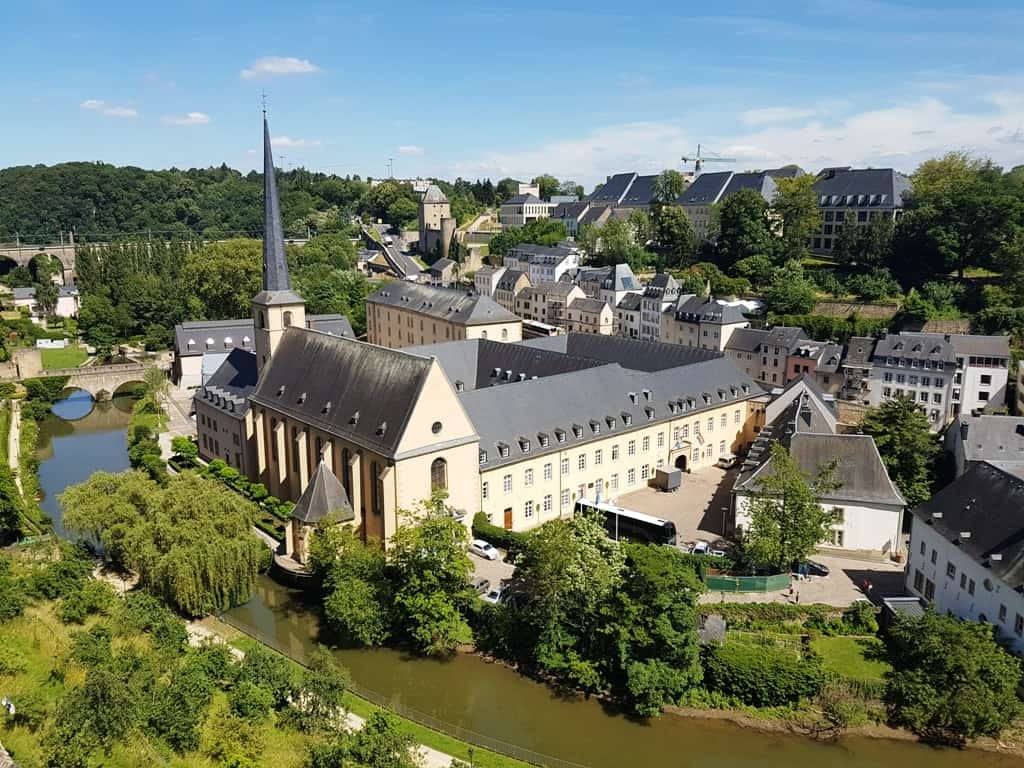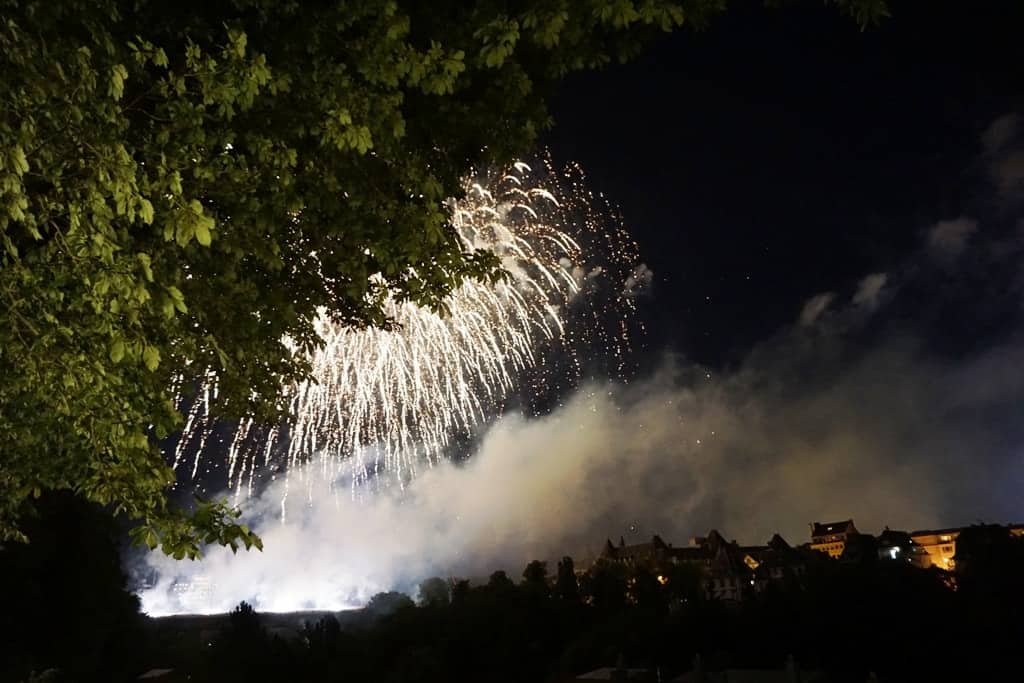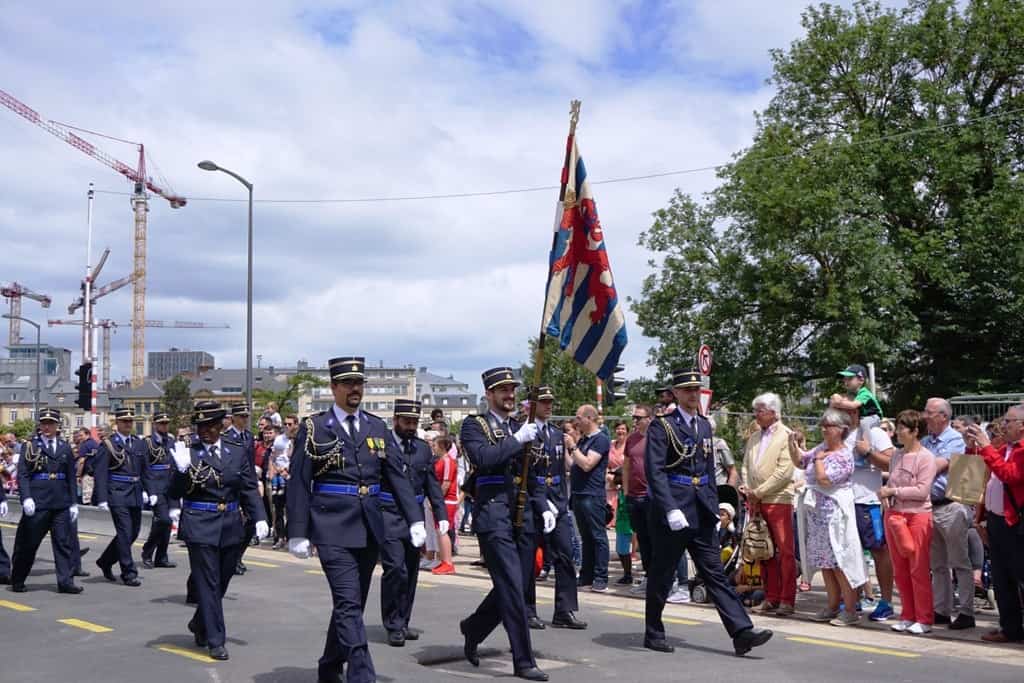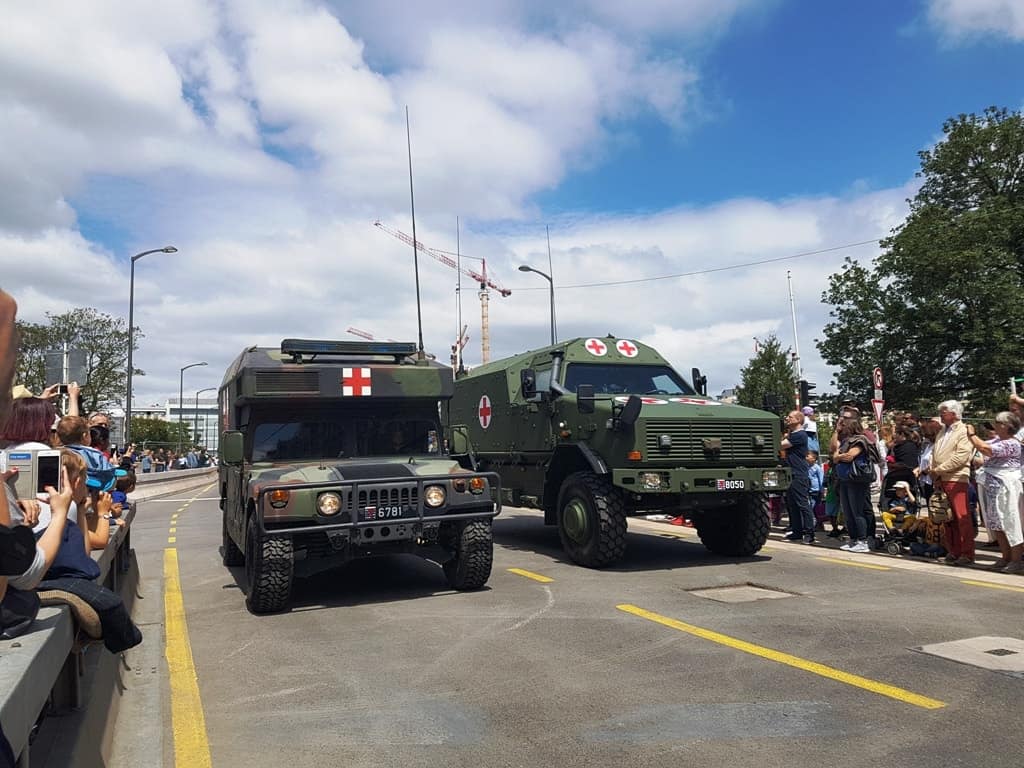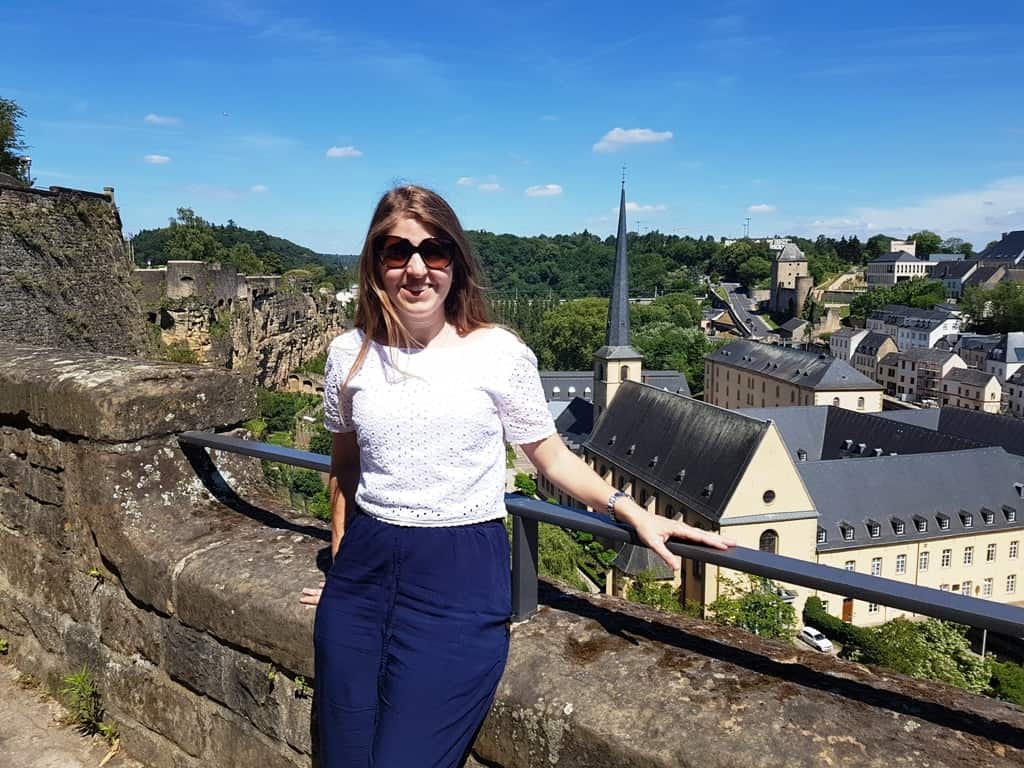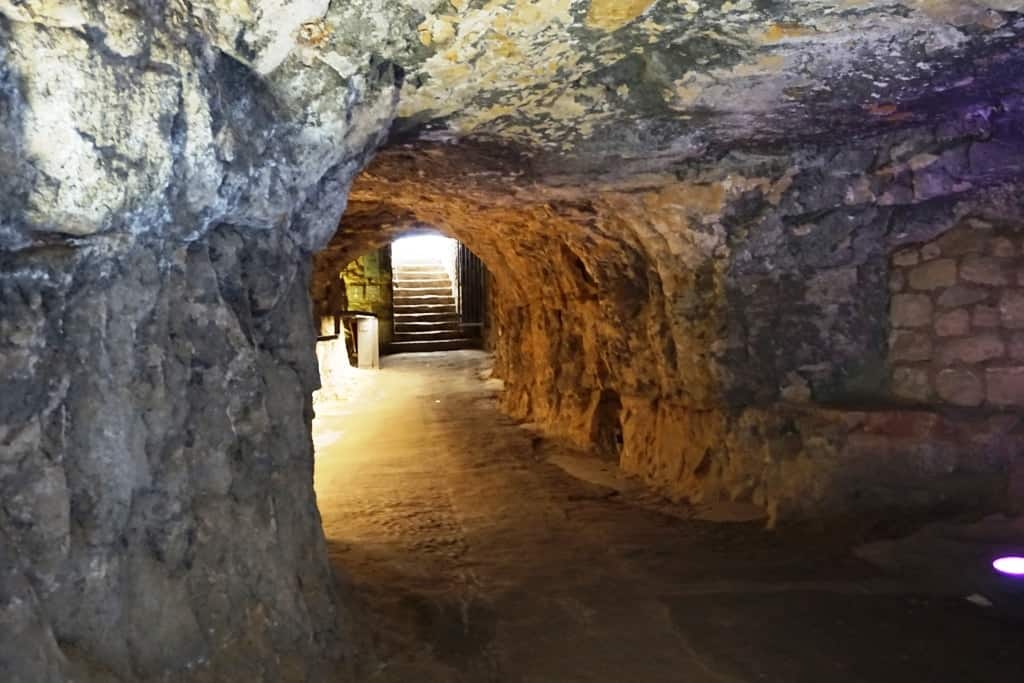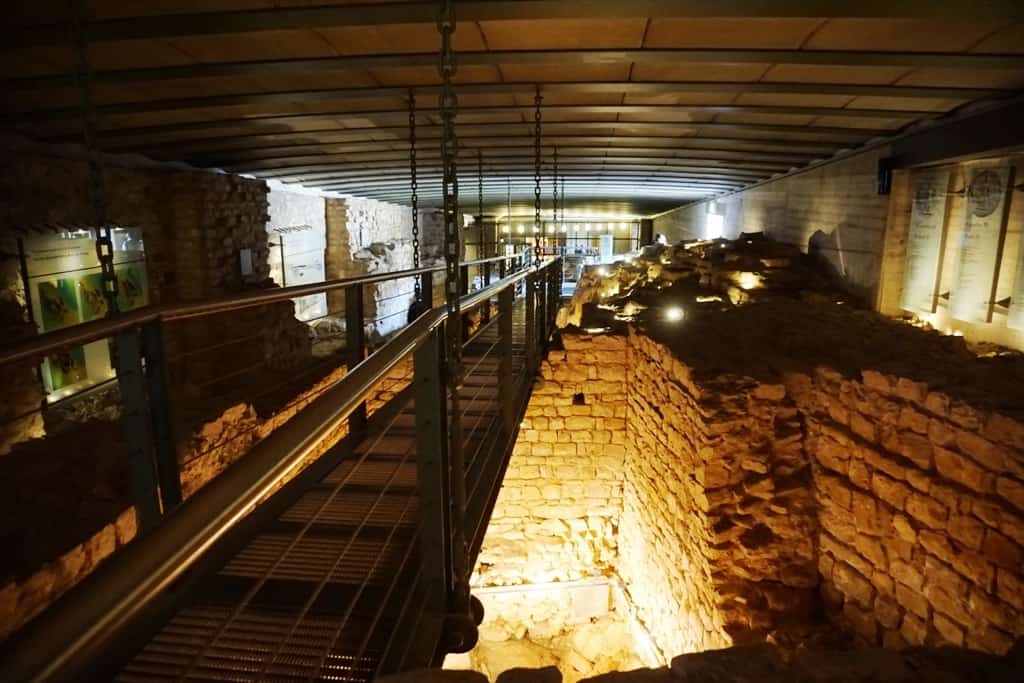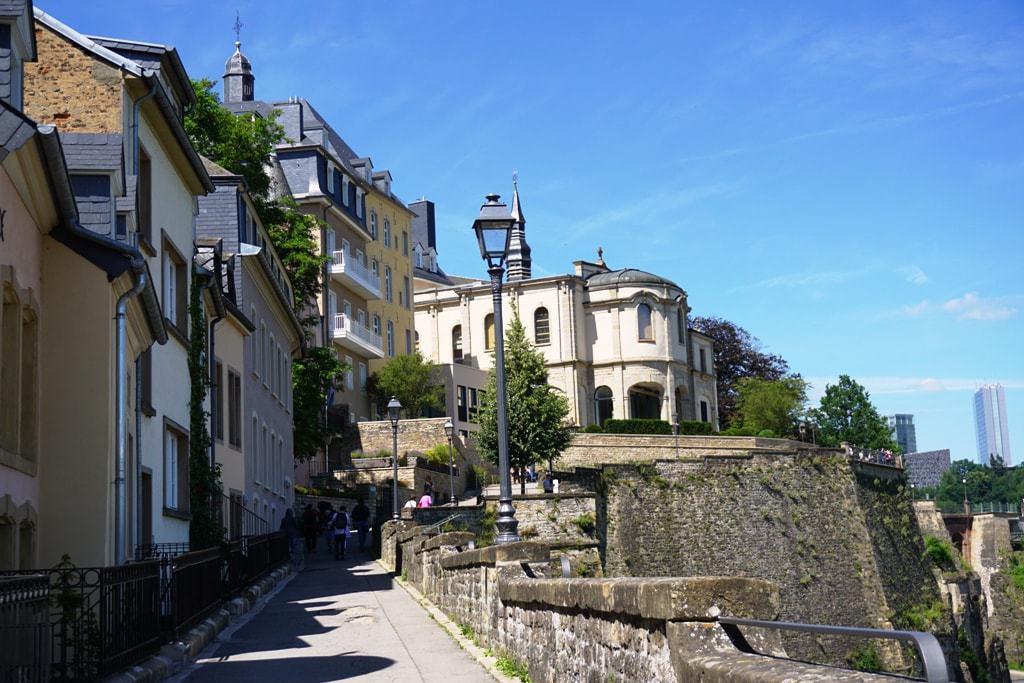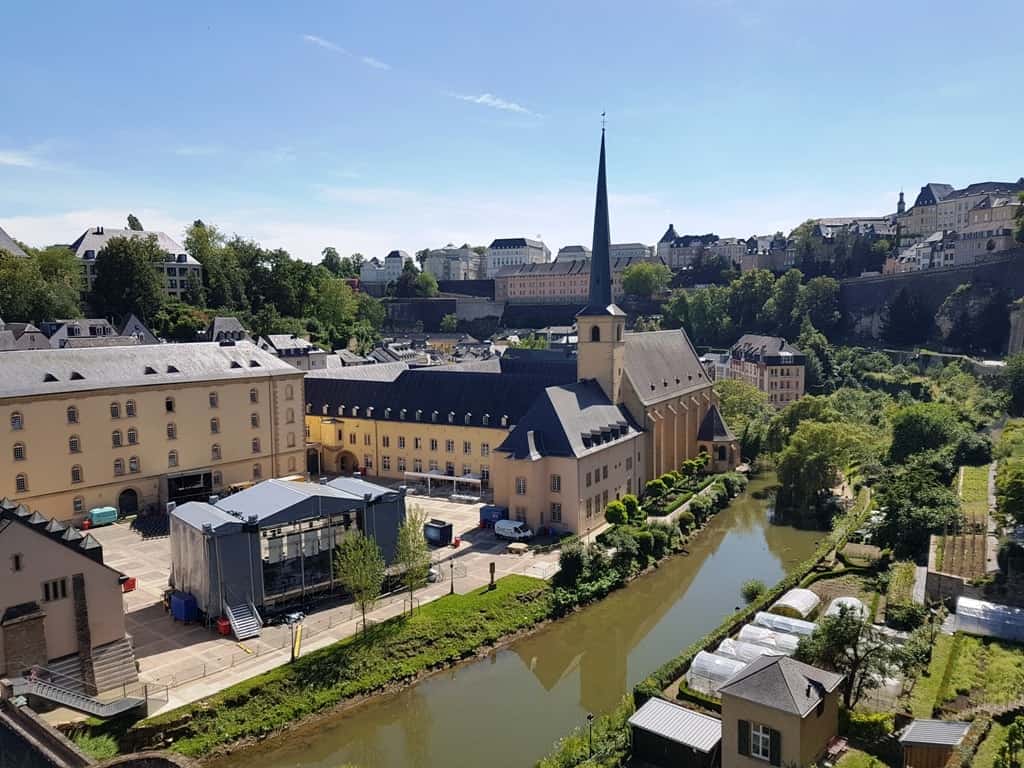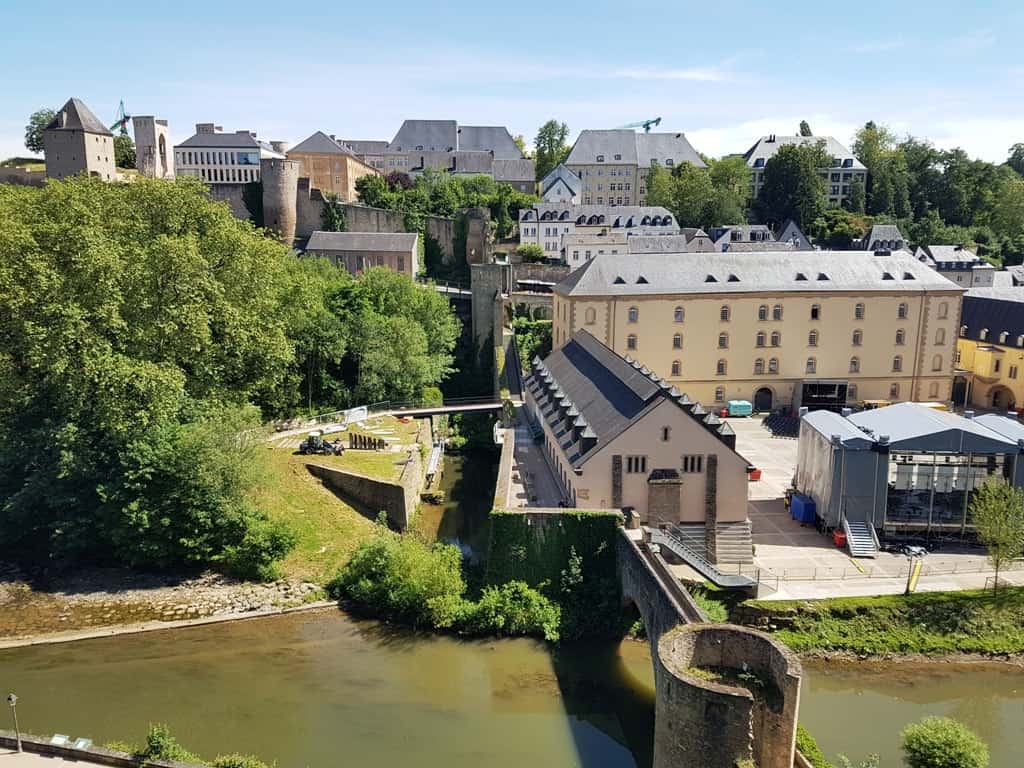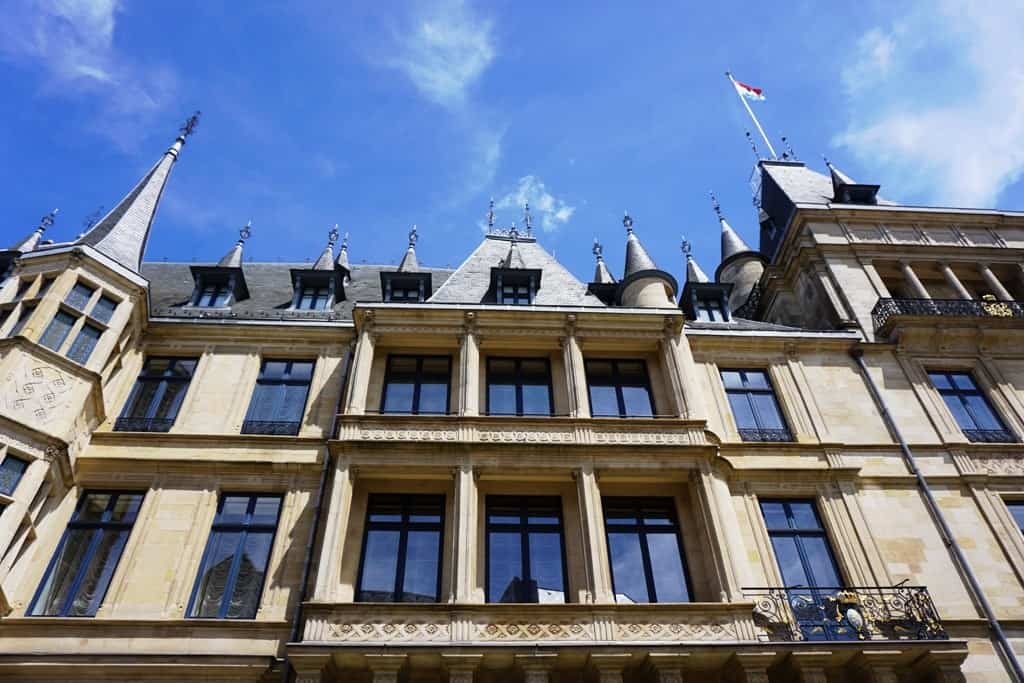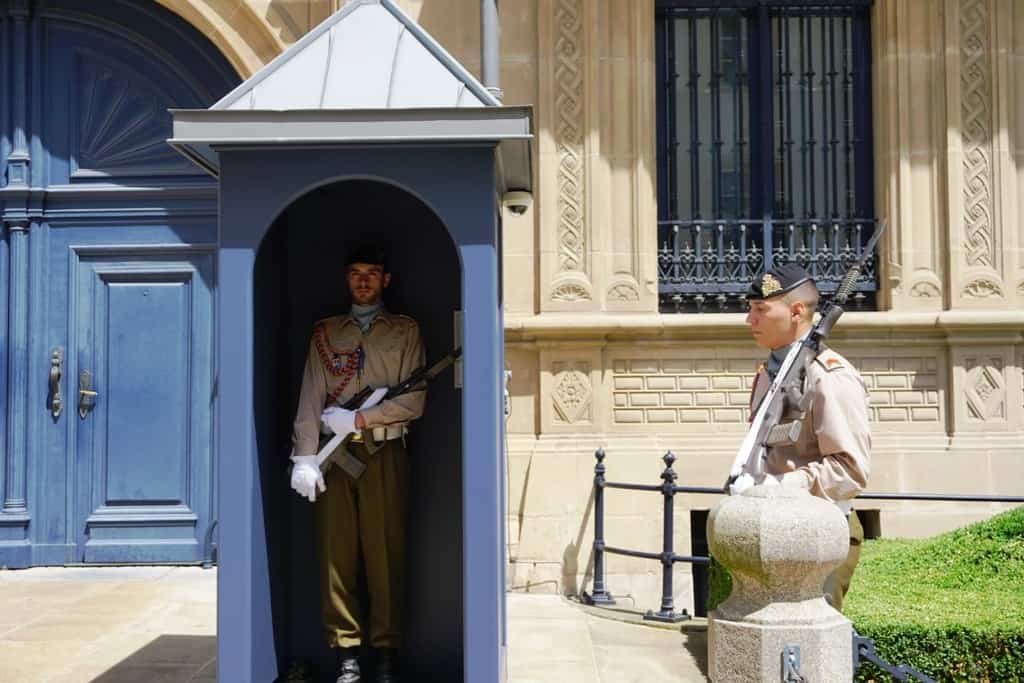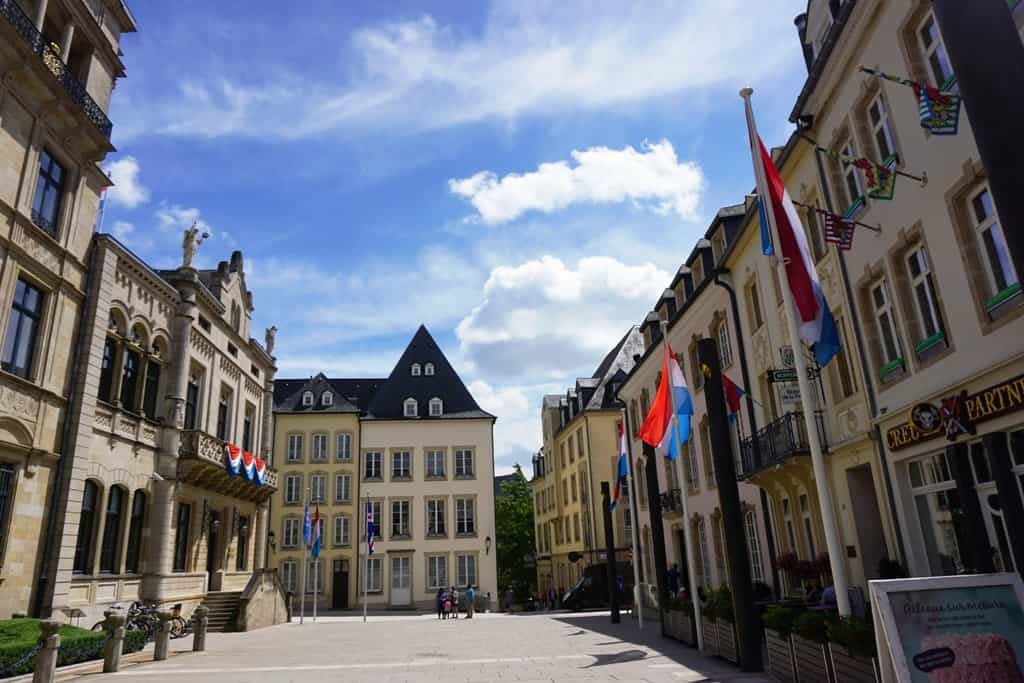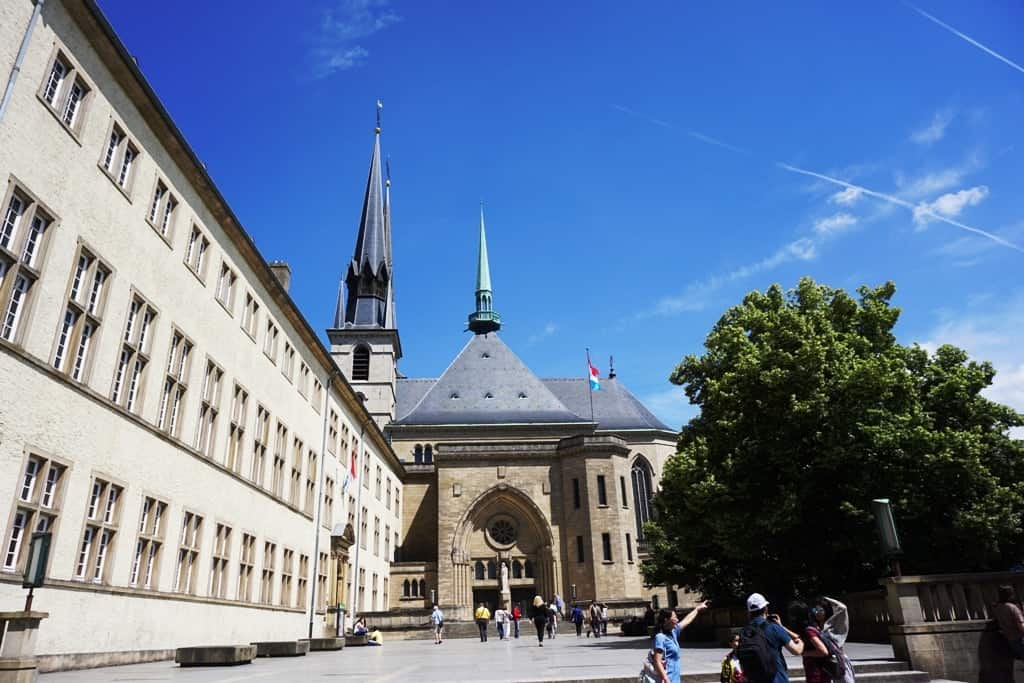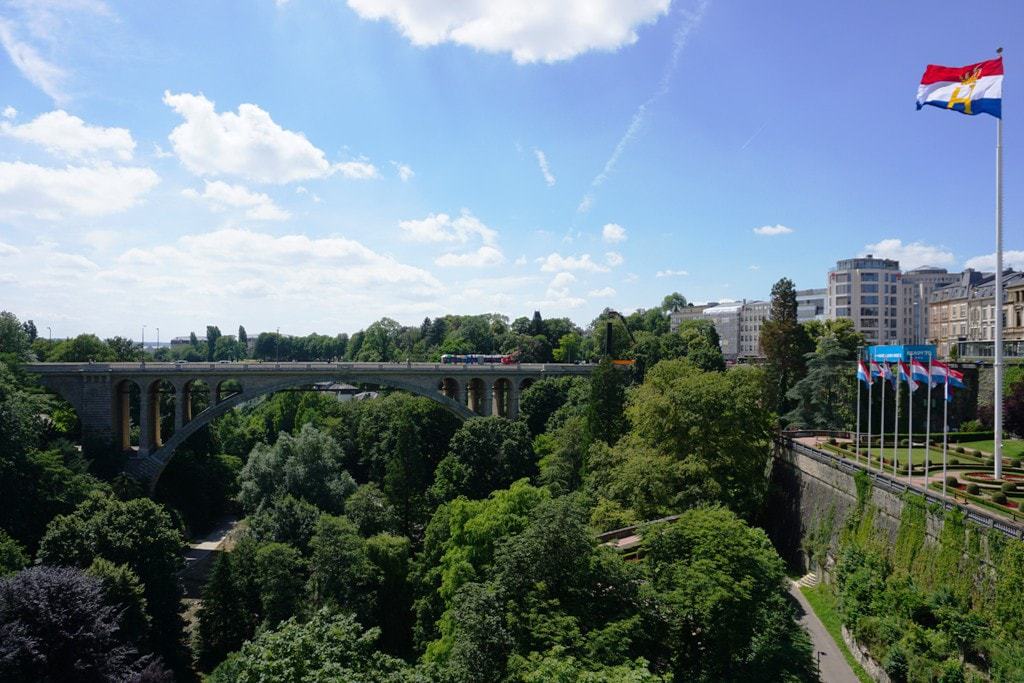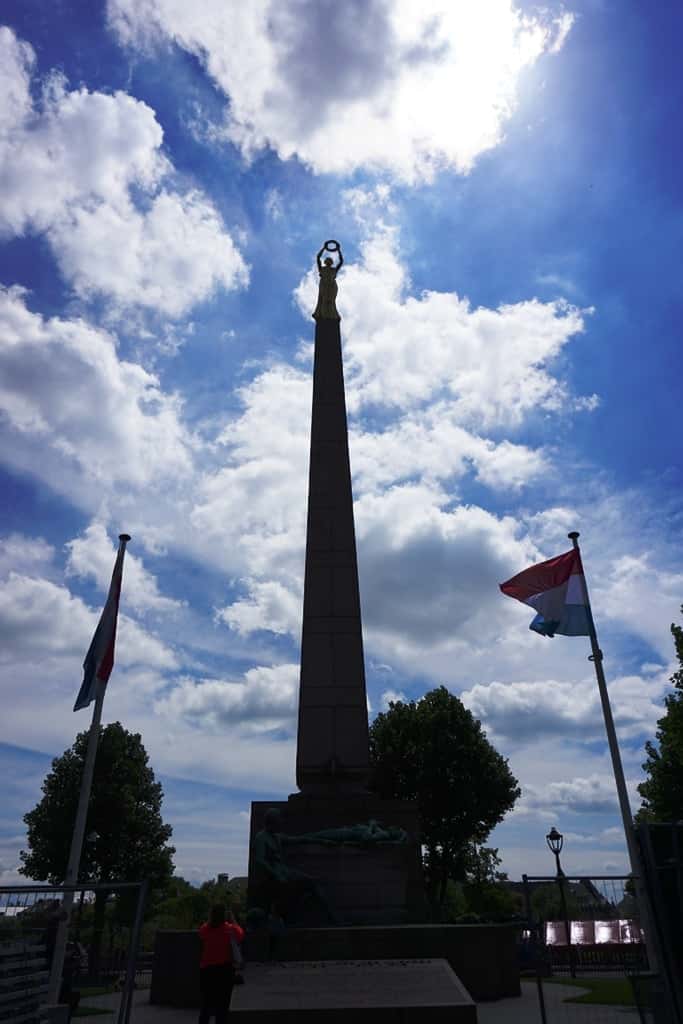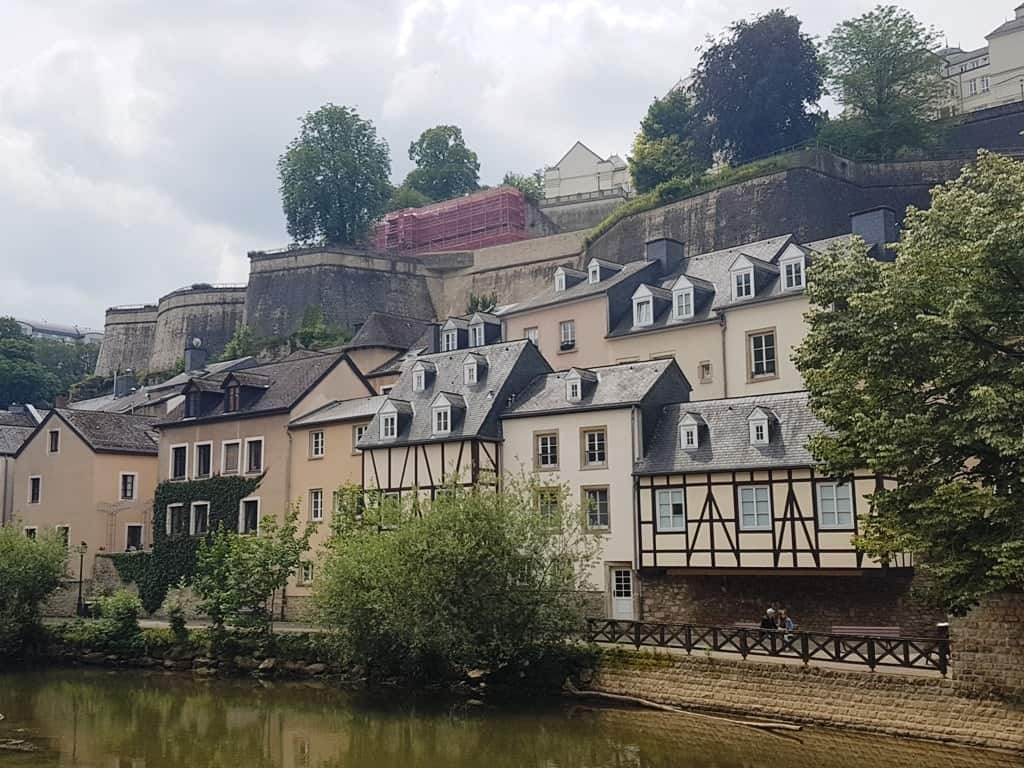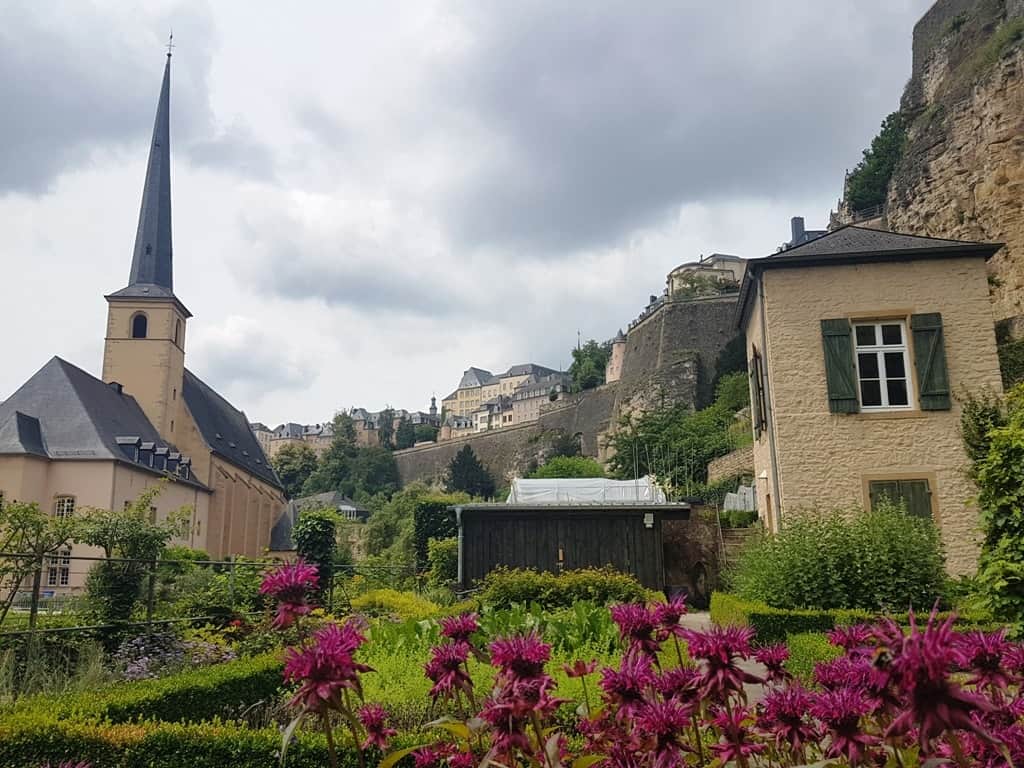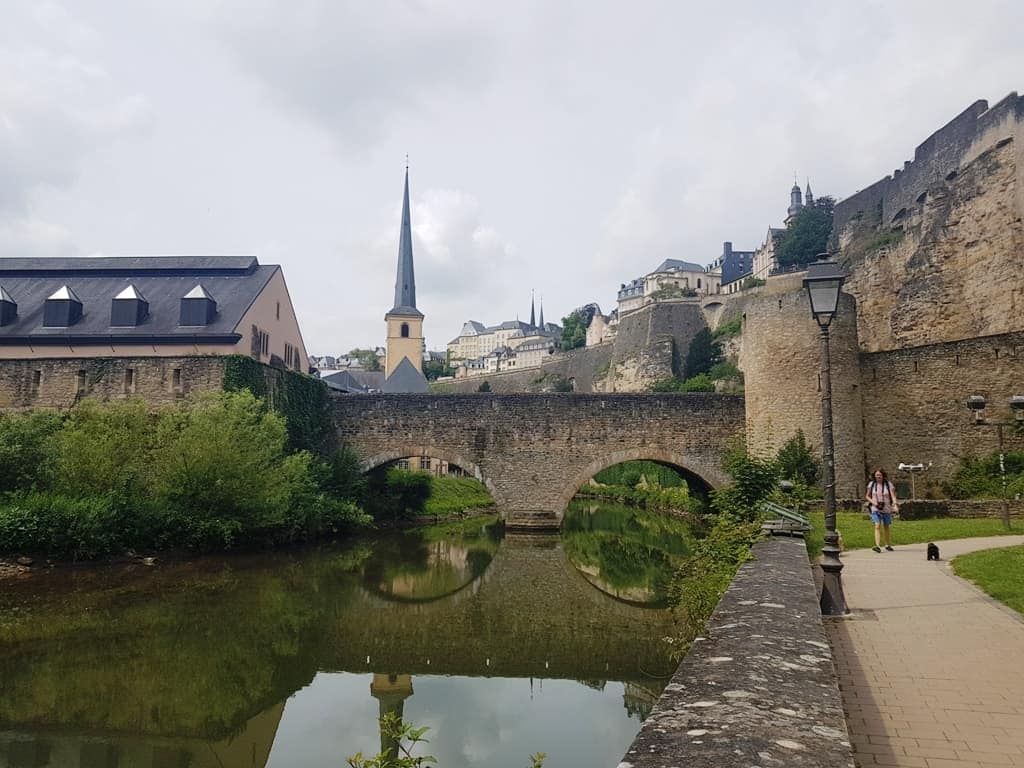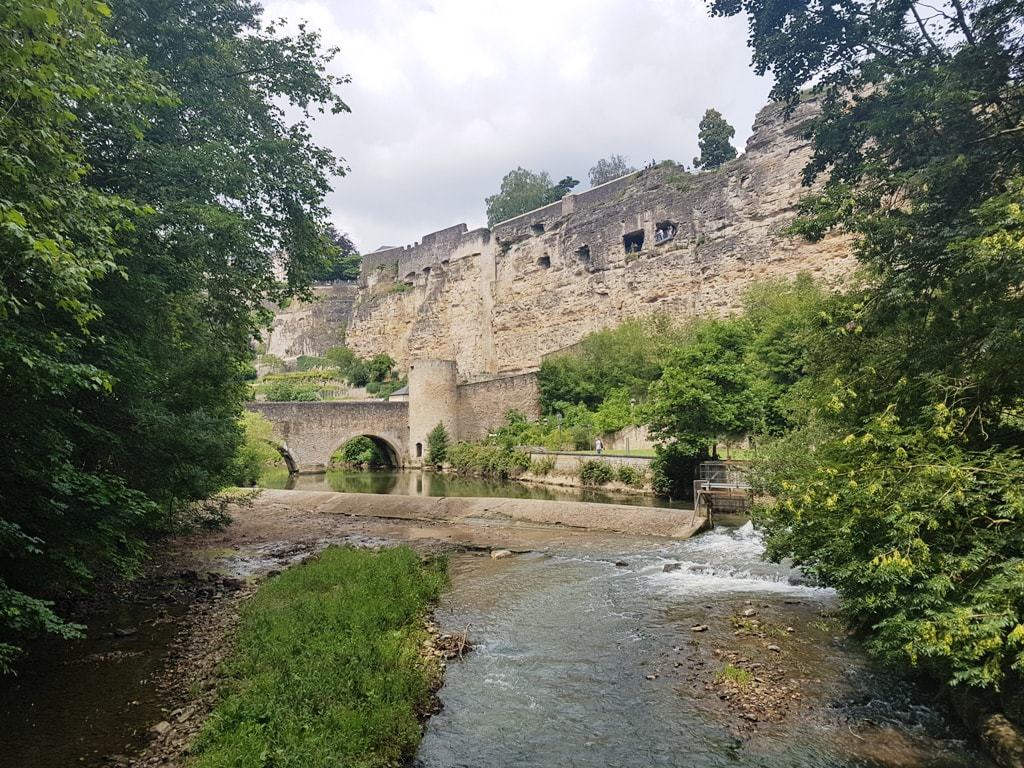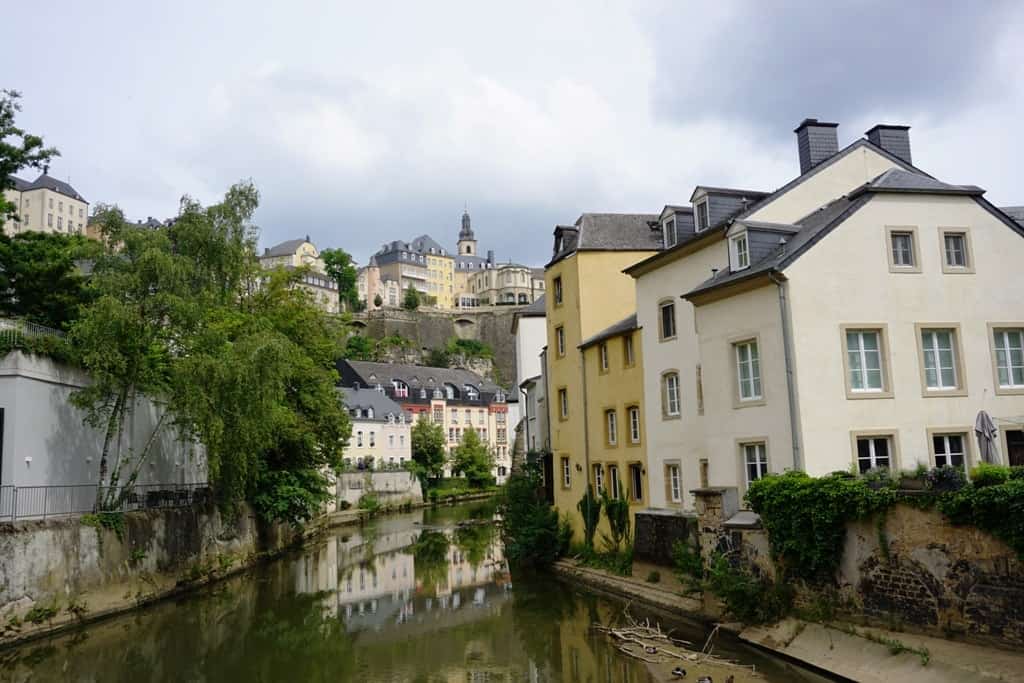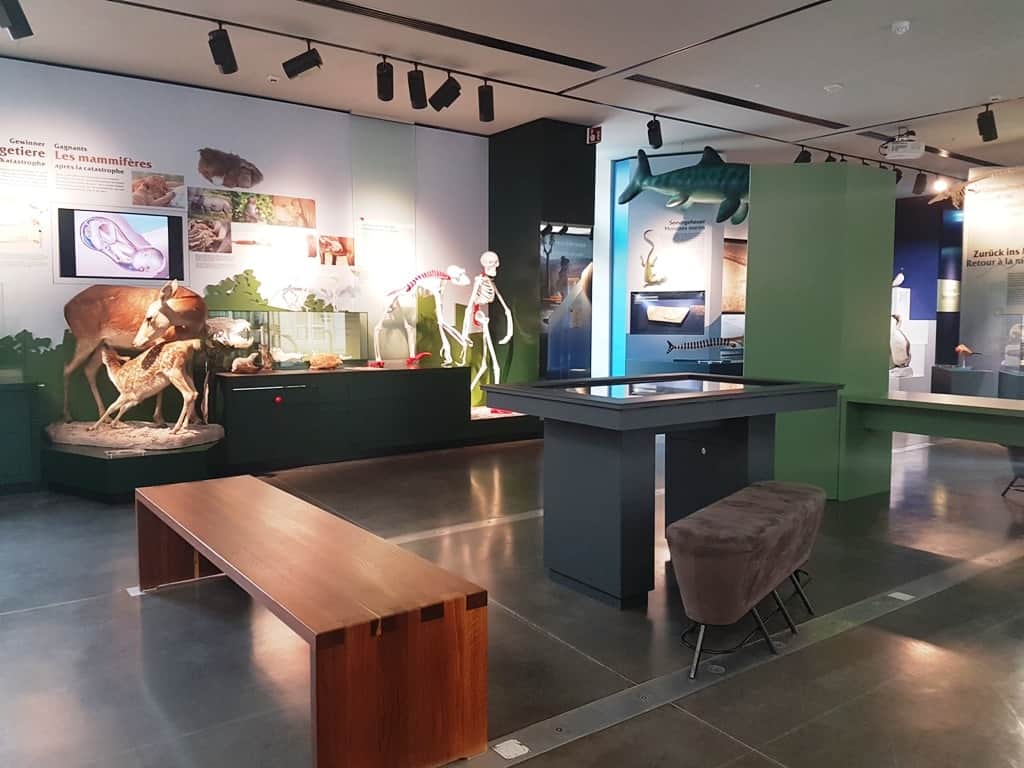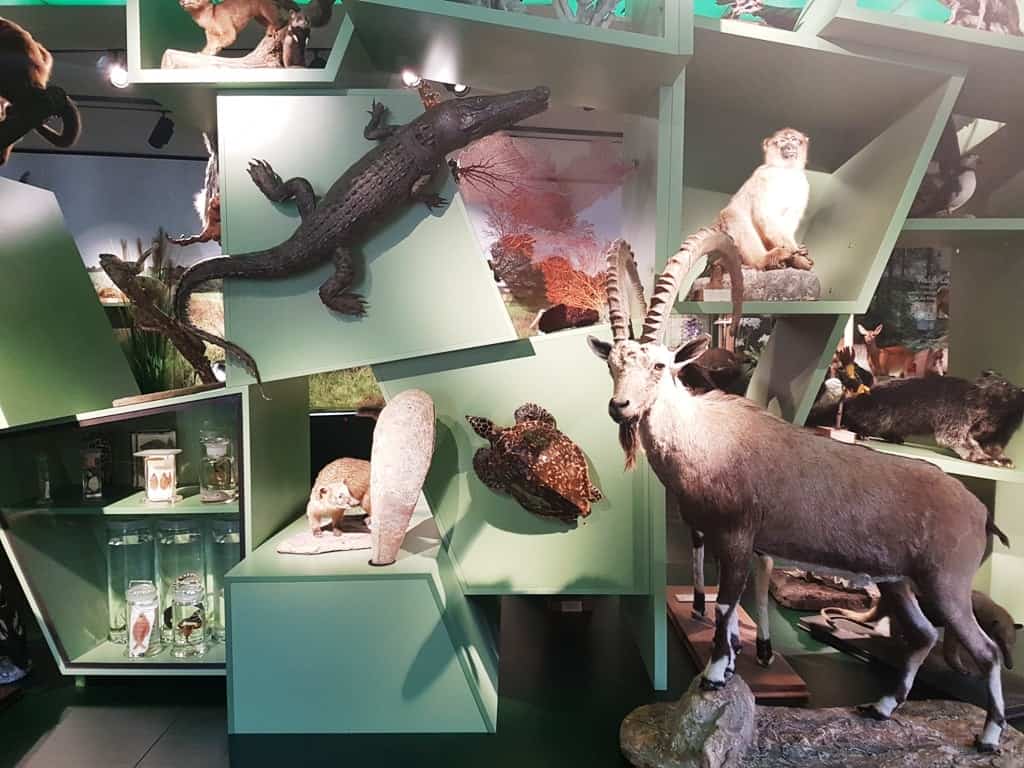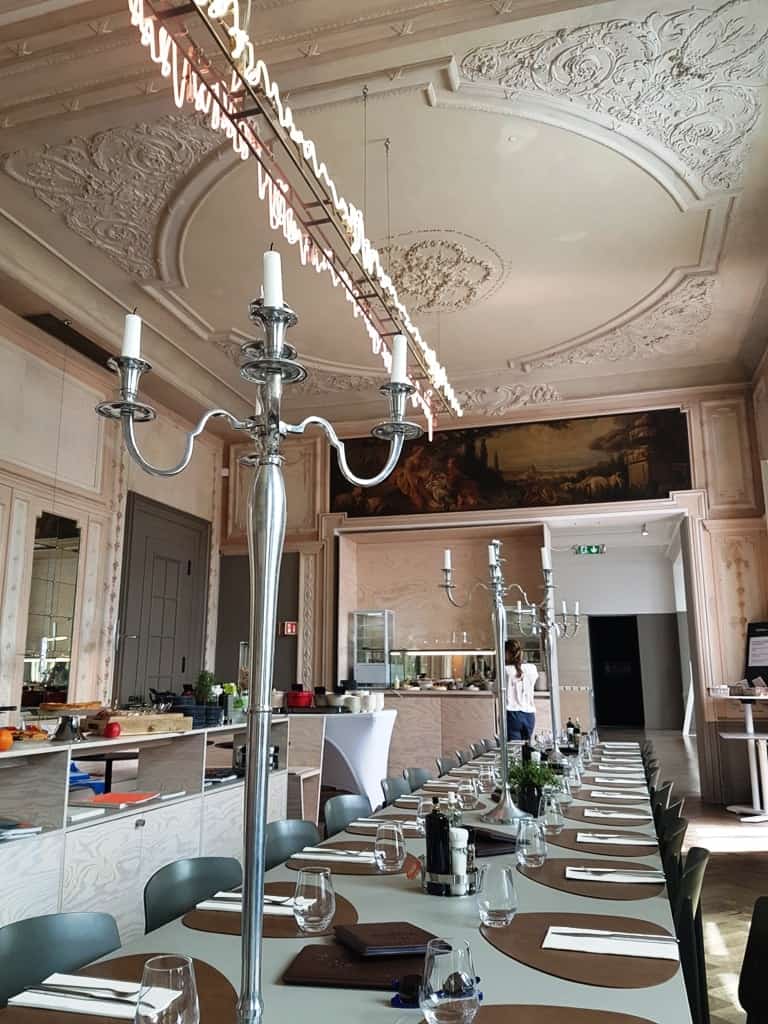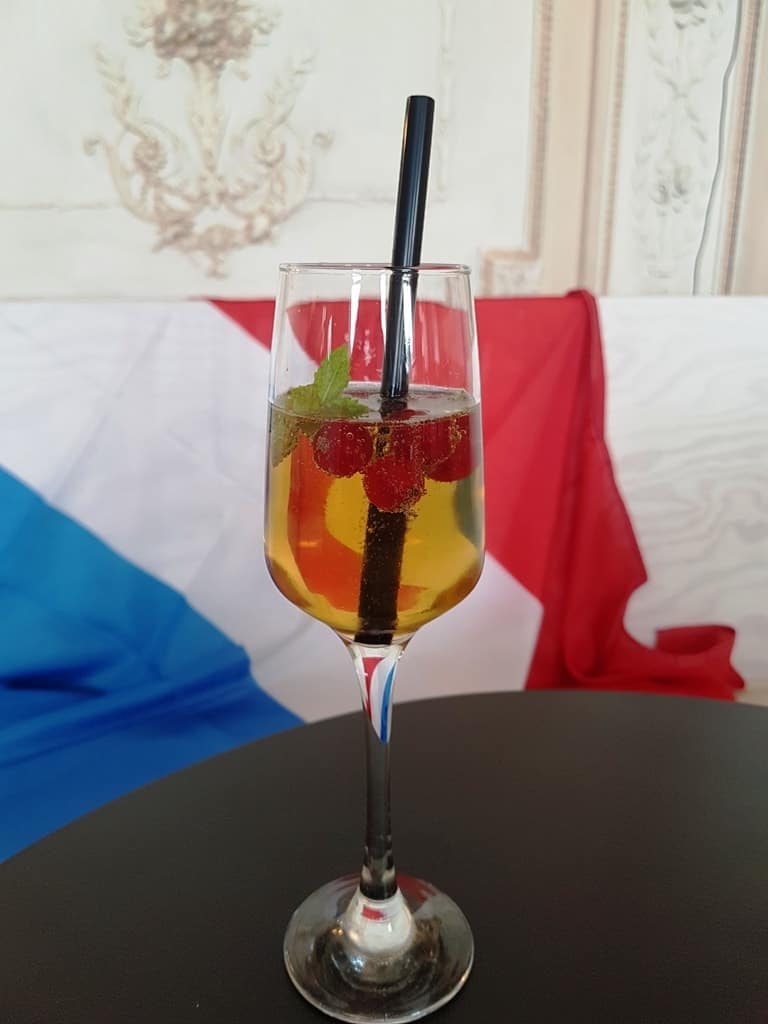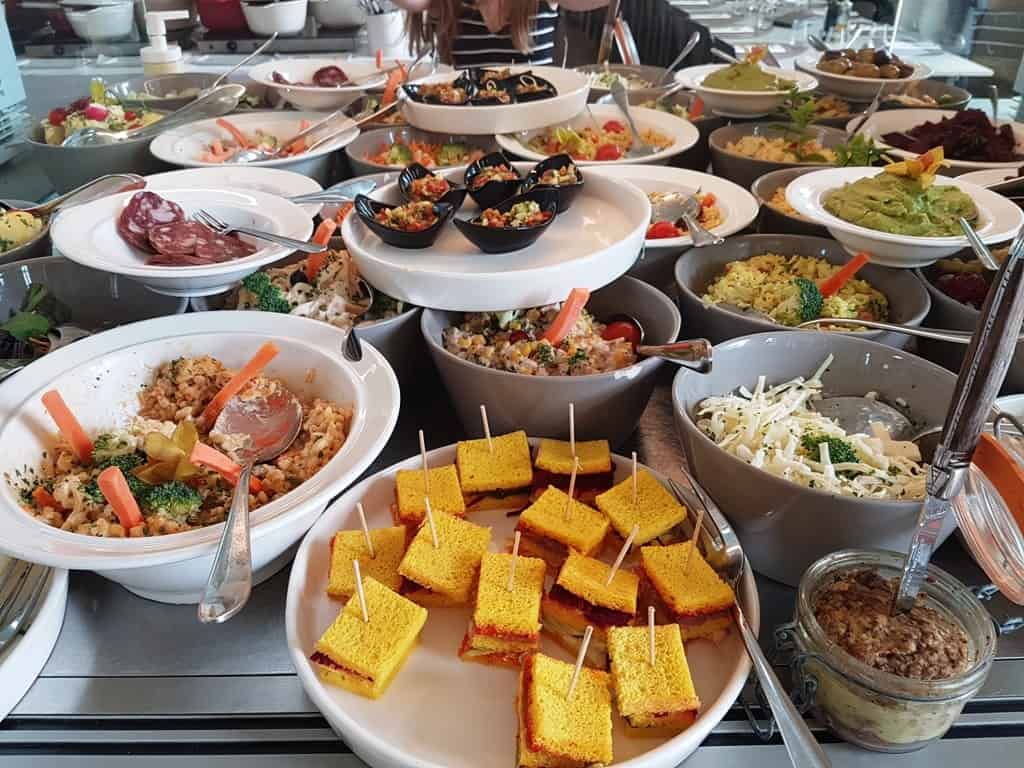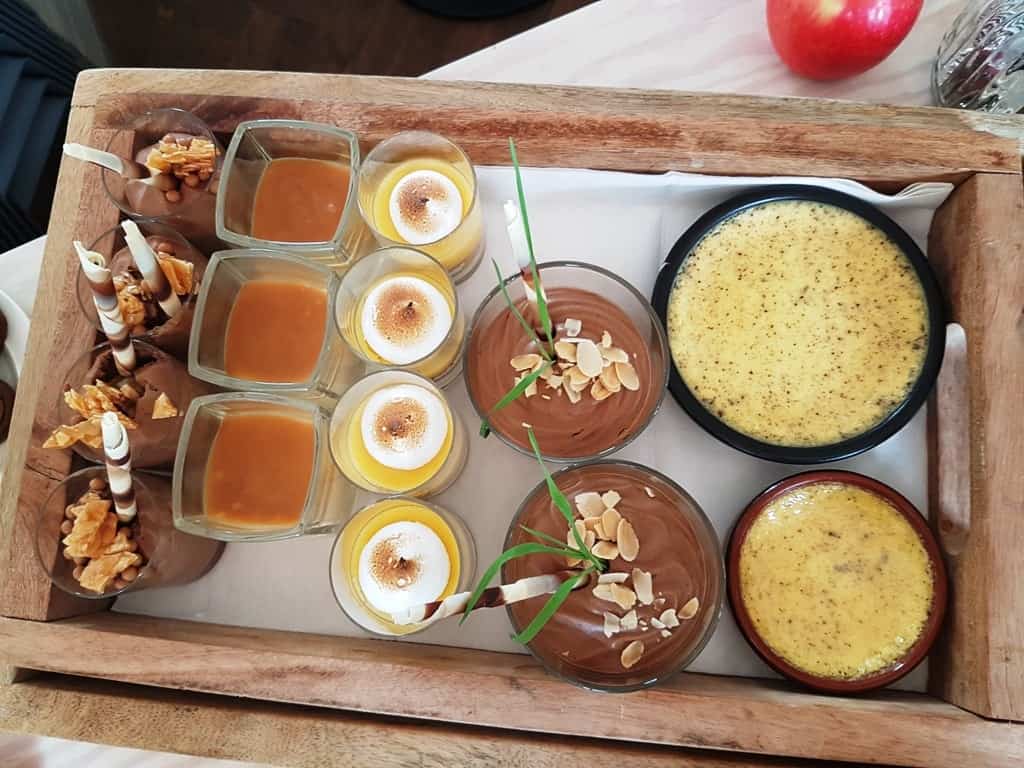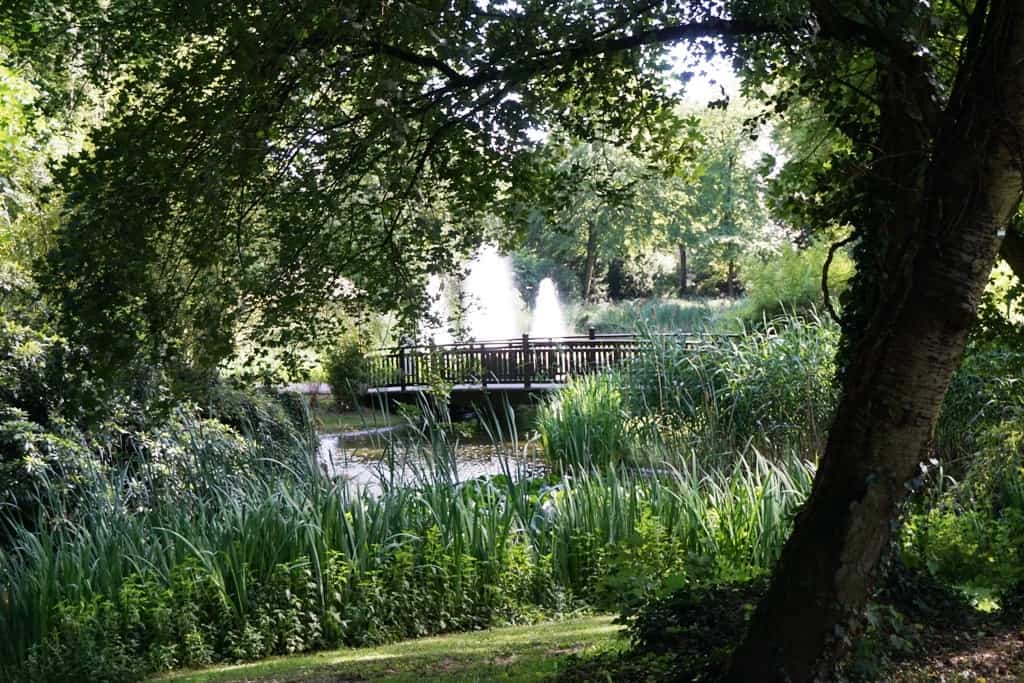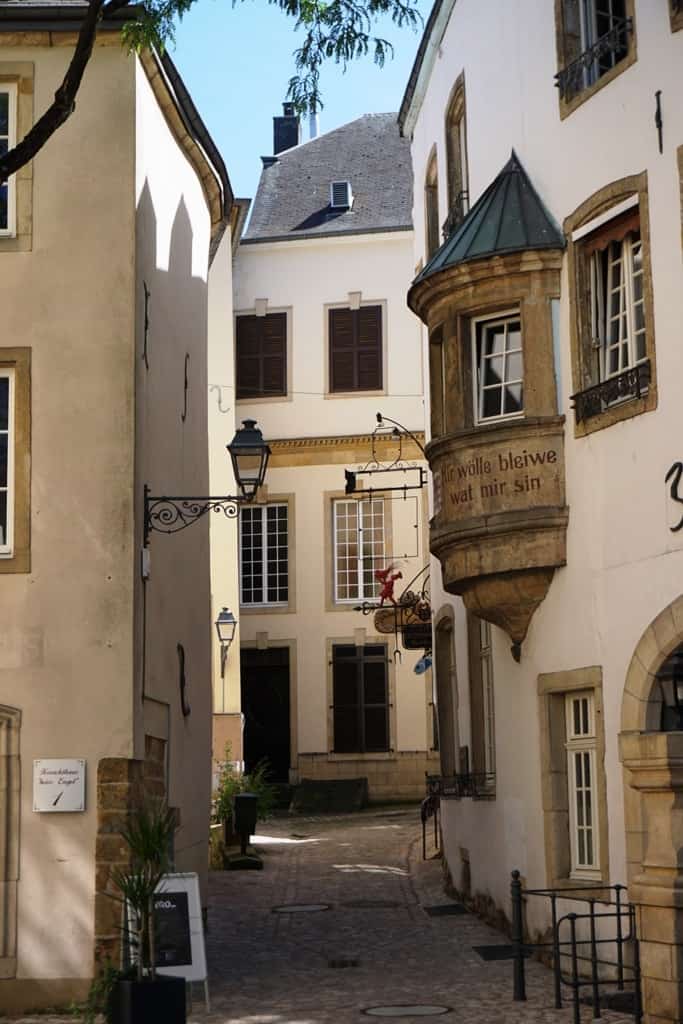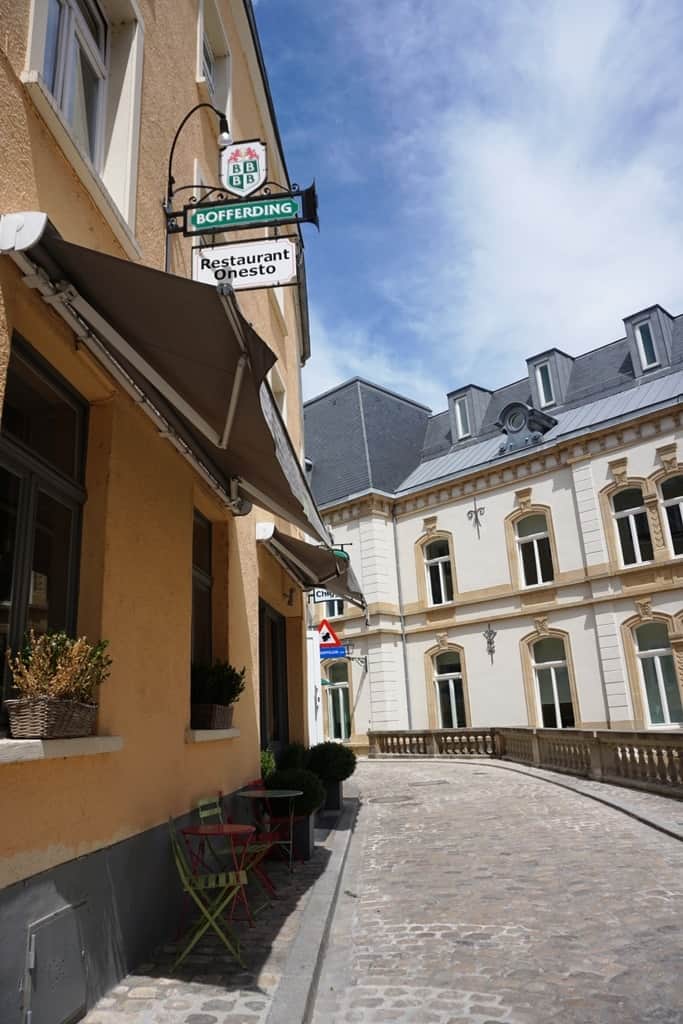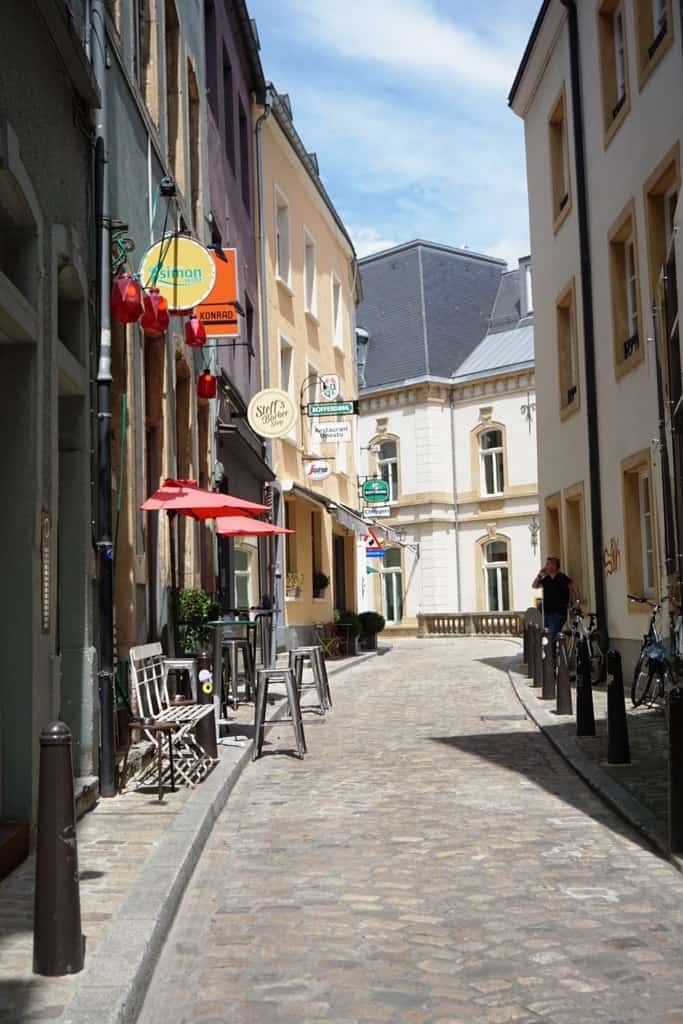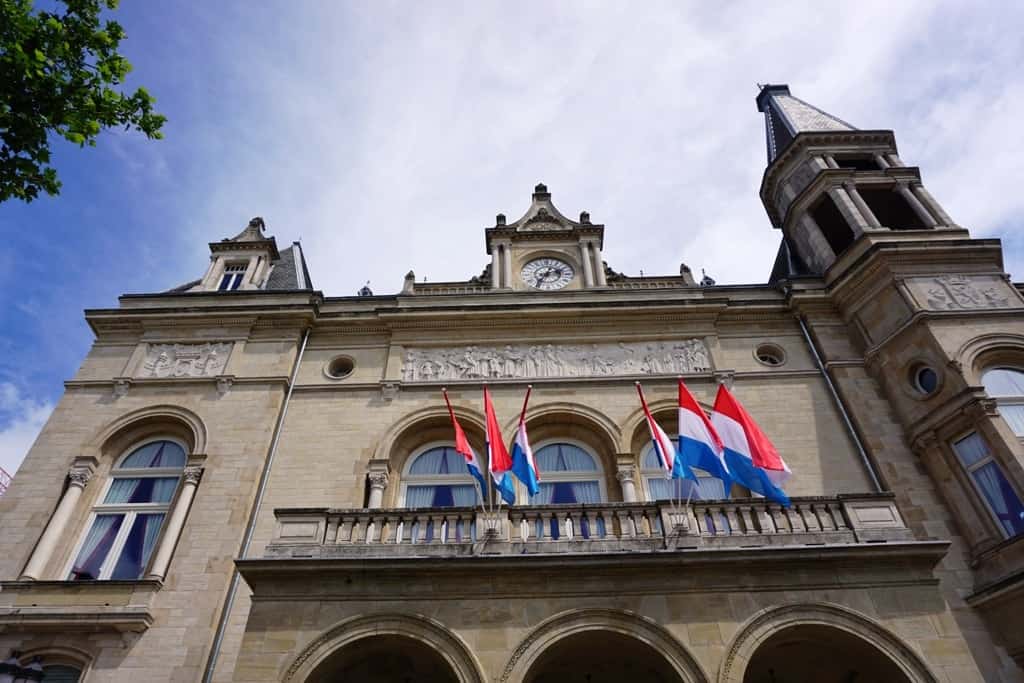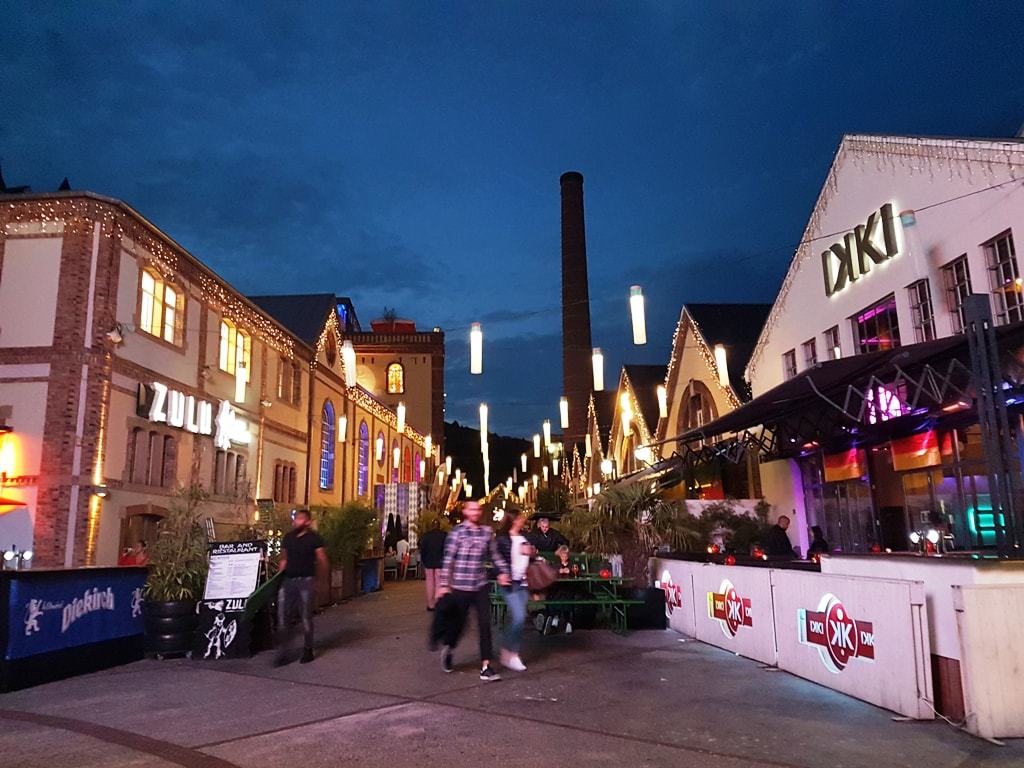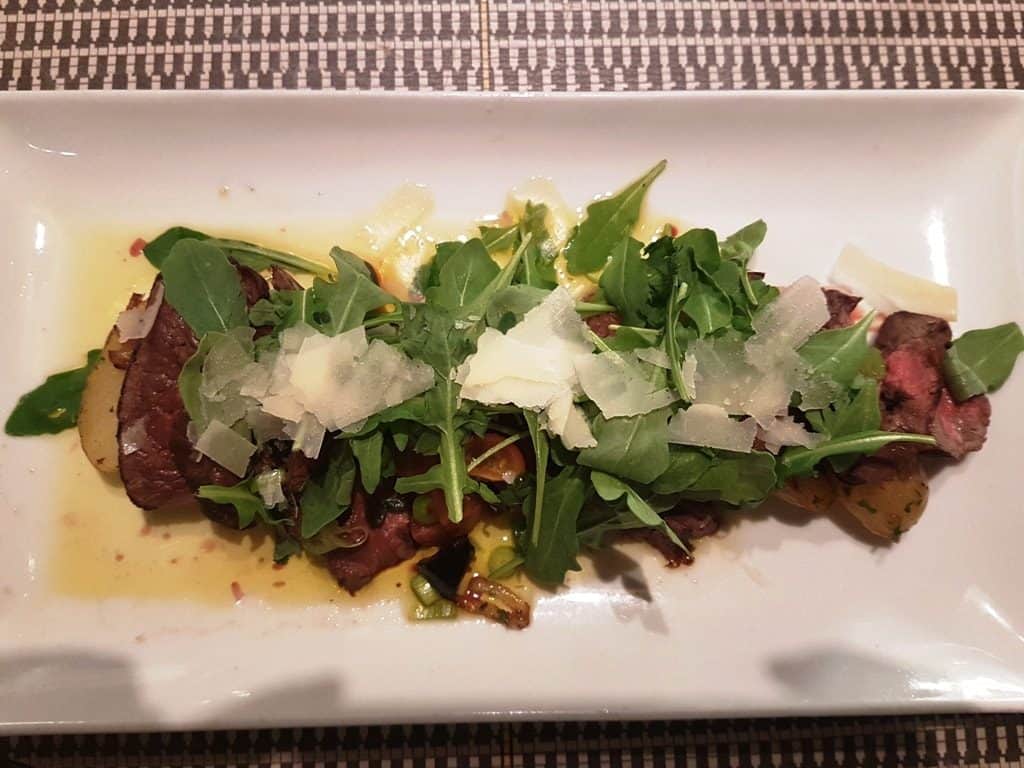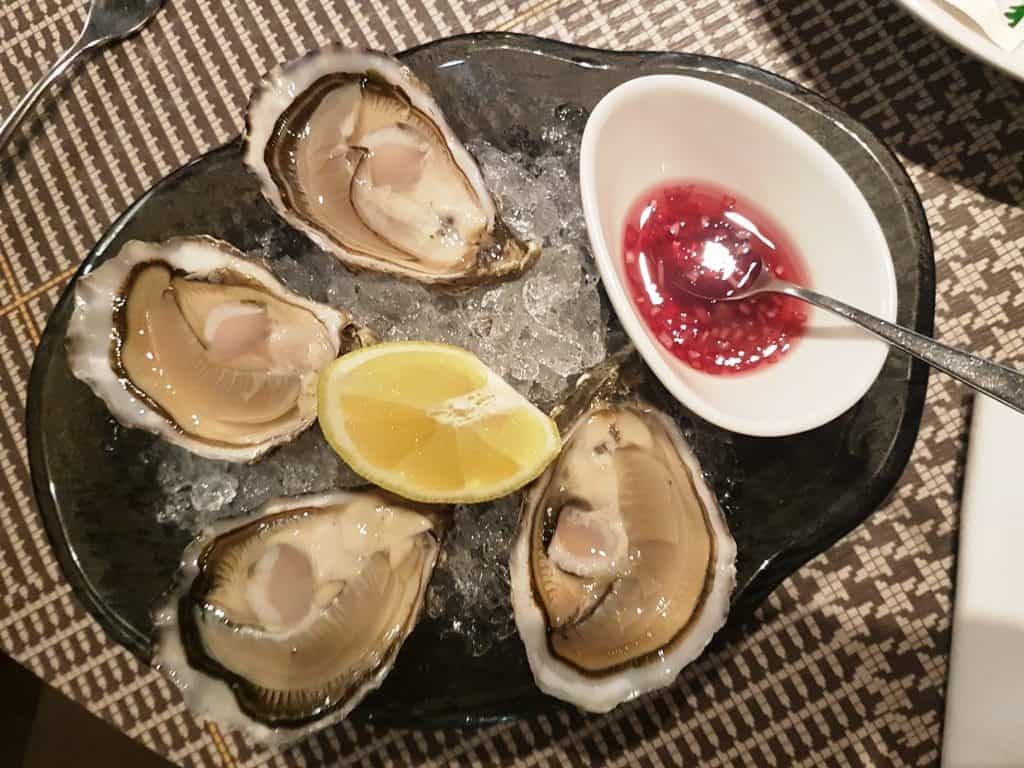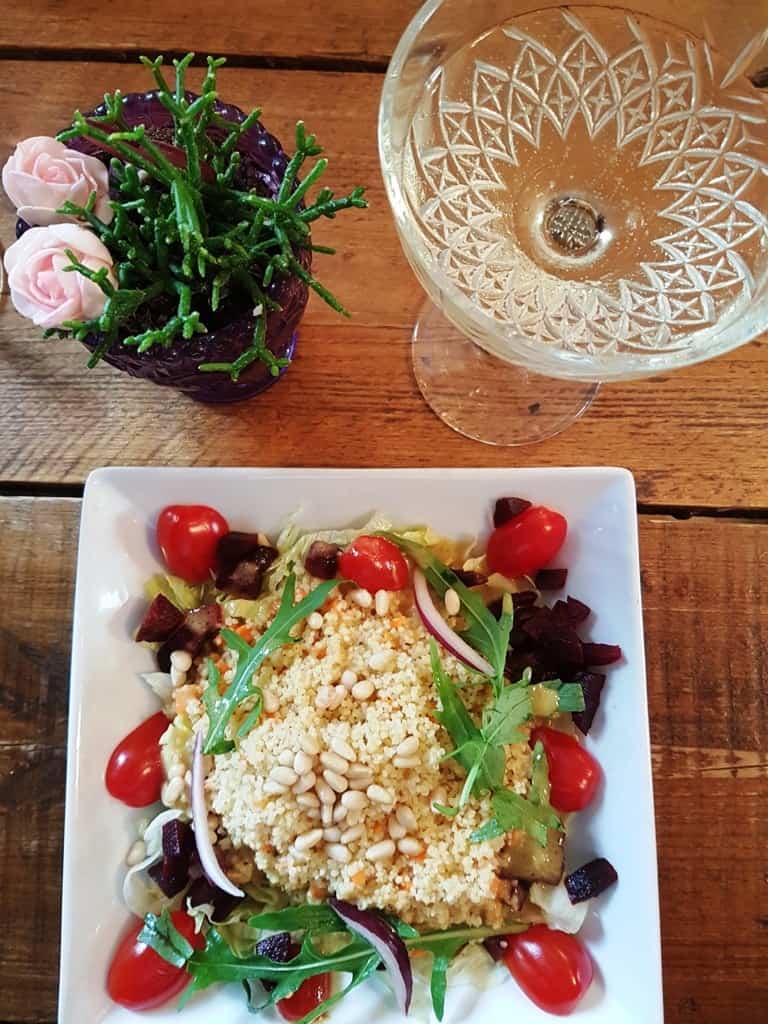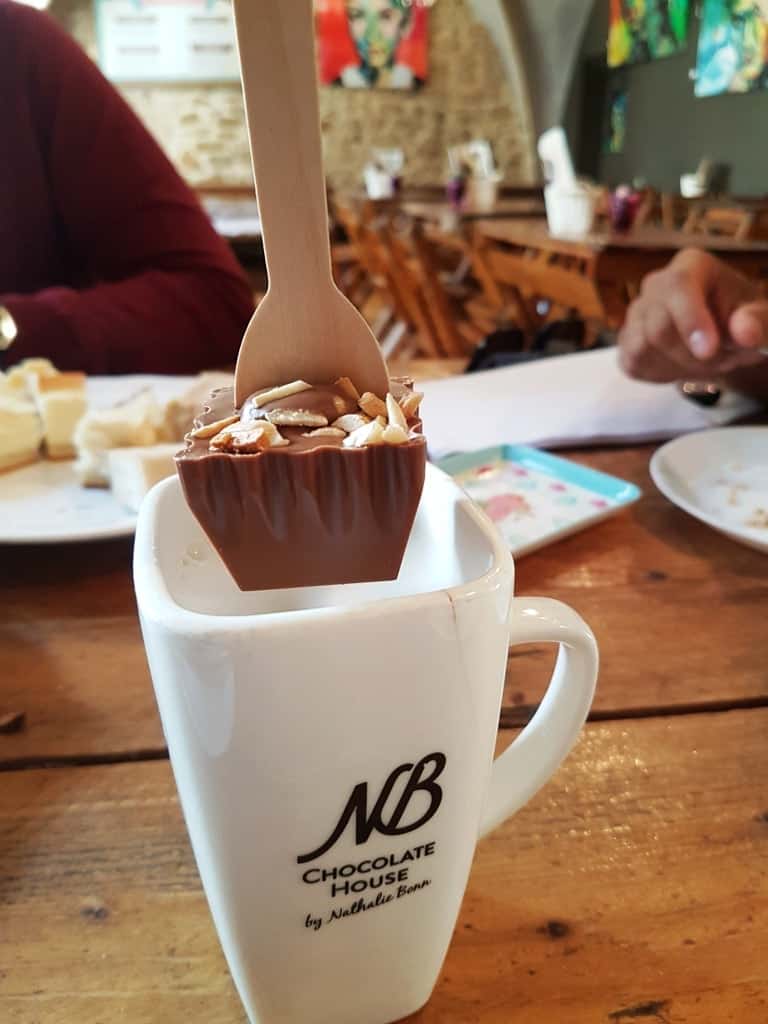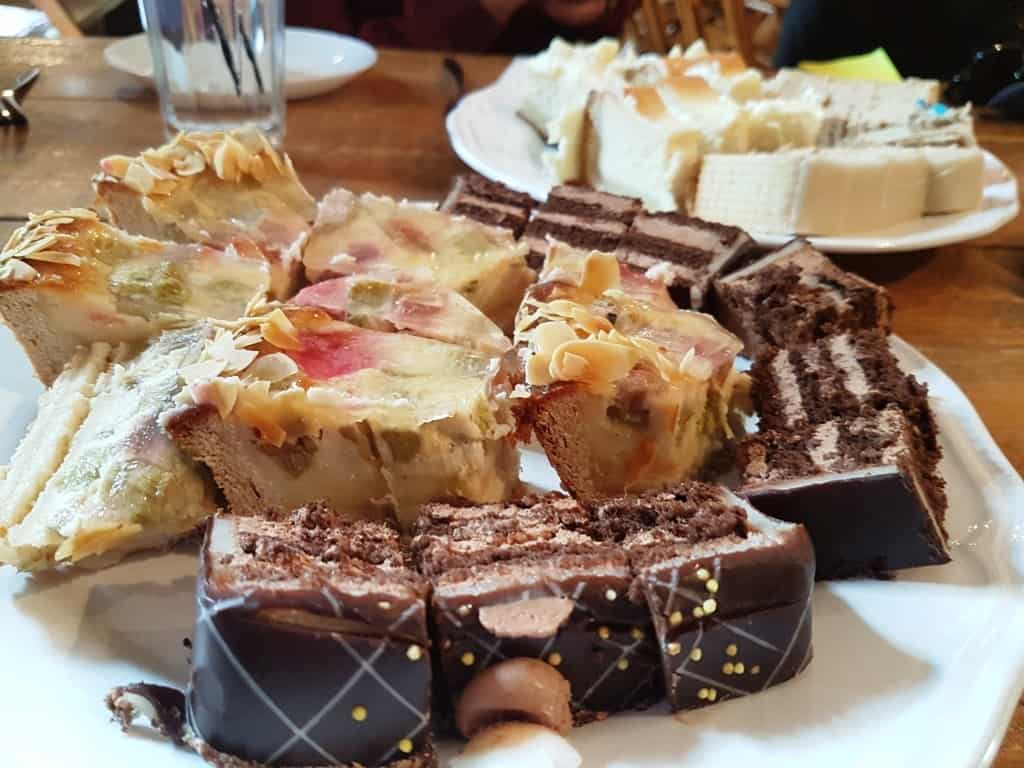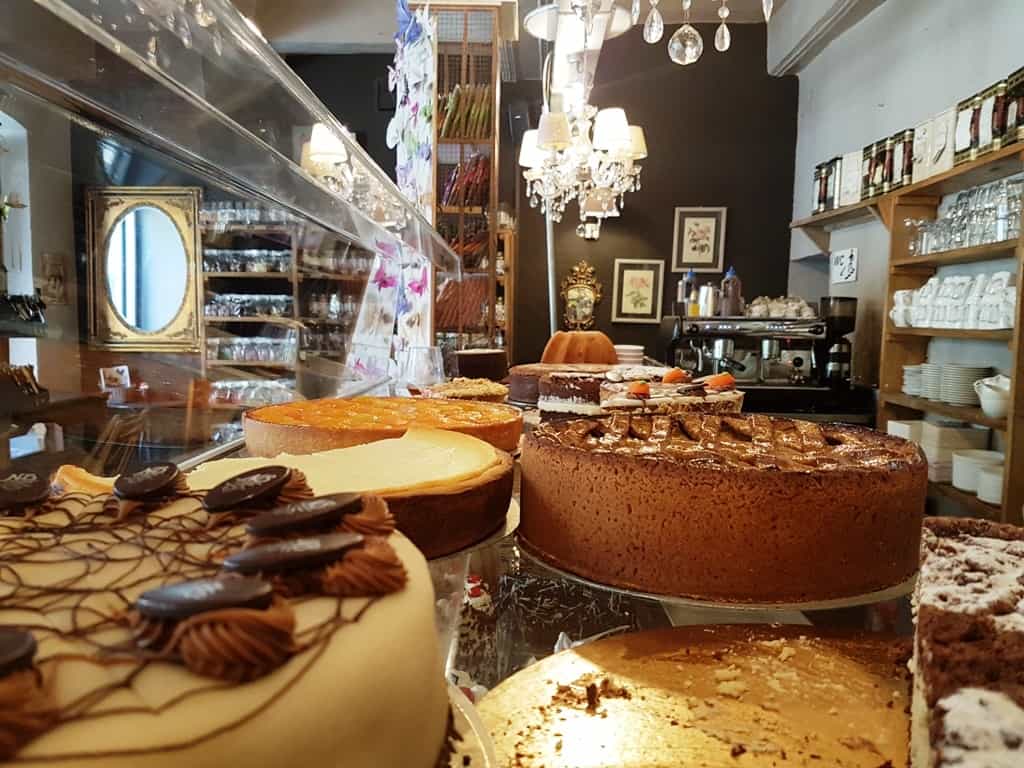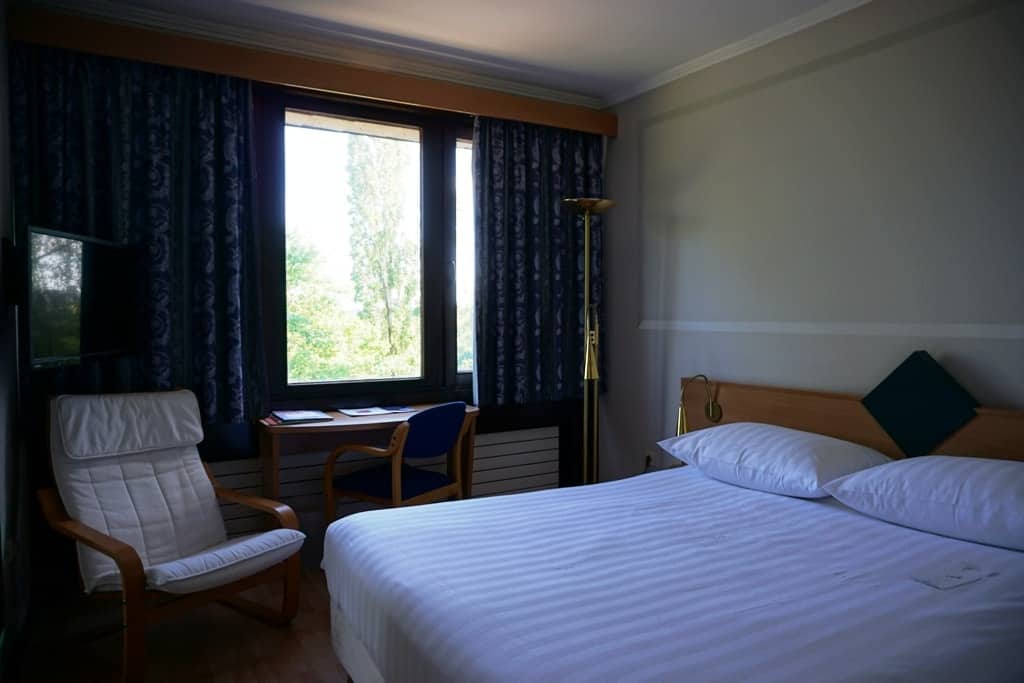This post is also available in: French
Luxembourg City is the capital of the Grand Duchy of Luxembourg, one of Europe’s smallest countries. It is located in the middle of Western Europe, only a little over 200 kilometres from Paris, Brussels, and Cologne. This very strategic position between the Holy Roman Empire and the French Empire meant that the city was highly desirable and needed to defend itself against invasion. While there have been people here since the Roman era, it wasn’t until the 10th century that Siegfried I of the Ardennes built a small fortified castle on the site of the modern city. Over the subsequent centuries, the small castle became a large castle. It remained heavily fortified, and in the medieval era was the strongest castle in Europe. It was known as the Gibraltar of the North, it was so heavily guarded and supposedly indefensible! Luxembourg City lies at the confluence of the Alzette and Petrusse rivers, laid out complexly over several tiered levels, two sides of the gorges, and various hills. It is full of museums and cathedrals, charming French and German cafes, and plenty of upscale, luxurious hotels and Michelin-starred restaurants.
Table of Contents
Luxembourg National Day
I was in Luxembourg City during their National Day, which is celebrated on June 23rd. It was originally held to celebrate the Grand Duchess Charlotte’s birthday. However, her birthday was January 23rd, and it’s kind of cold then! So, Luxembourg voted to postpone the celebrations until June 23rd, six months later. National Day has always been held on June 23rd, even following Charlotte’s abdication. The celebration begins on the evening of the 22nd, when the 4:00pm Changing of the Guard at the Grand Ducal Palace marks the start of the festivities. Following this, there is a torchlight procession through the city, open-air parties with free concerts, DJs, and street food vendors, and fireworks over the Adolphe Bridge. On the actual day, June 23rd, the day begins with a military parade and gun salute. It was very special to be able to see the celebrations and especially the fireworks which were spectacular.
I also spent some time exploring Luxembourg City. There is quite a bit to do here, from fascinating history museums to the old castle and battlements, modern art museums, and public parks and squares. Read on for my list of things to do in Luxembourg City.
Things to do in Luxembourg City
Luxembourg Card
I totally recommend that you buy the Luxembourg Card while in Luxembourg. It offers you a lot of advantages like free entry to more than 60 attractions around the country, and free use of the buses and trains on the national public transport network of Luxembourg. The card is valid for 1 day, 2 days or 3 days depending on which card you buy.
For more information: https://www.visitluxembourg.com/en/luxembourg-card
Explore the Bock and the City Casements
The Bock and the City Casements are the heart of the original city. The first fortification was built in 943 on the Bock promontory. By the 15th century, the simple castle had expanded to include 24 ring forts, 16 other defensive works, and over 23 kilometres of casements. These casements housed soldiers, horses, kitchens, butchers, etc. When the city dismantled their fortifications in the 19th century, they couldn’t raze the casements without destroying part of the city, so instead they sealed up entrances and closed the rooms. However, today parts of this are open to visitors. It’s a really interesting look into the old part of Luxembourg.
Admire the view from the Walls of the Corniche
Thanks to the dismantling of the Bock, the Corniche promenade opened up to a wonderful view of the Grund district. This walk along the ramparts over the Alzette valley goes from the promontory to the citadel.
Visit the Grand Ducal Palace
The Grand Ducal Palace sits in the middle of the old town. Originally, its function was the town hall; as time went on and annexes were added, it became the seat of Parliament and a residence. It is the city residence of the Ducal family and was restored in the 1990s. They run tours in the summer.
Notre-Dame Cathedral
The 17th century Jesuit church of Notre Dame lies at the edge of the old town. It was originally built to be the church of the Jesuit college, which is now the Luxembourg National Library. It is of Baroque Renaissance style and has a semi-Gothic interior as well as 19th and 20th century stained glass. The cathedral was expanded and renovated in the late 1930s. Members of the Grand Ducal family are buried in the crypt.
Adolphe Bridge
The 153 metre long Adolphe Bridge crosses the Petrusse River between the Ville Haute and Gare quarters. The bridge, an unofficial symbol of the city, was built in the early 1900s and was the largest stone arch at the time. It has been modified over time and now includes the modern tramlines as well as a lower, suspended pedestrian bridge.
National Museum of History and Art
Luxembourg’s Museum of History and Art, which is located in the Fischmarkt, is home to an extensive collection of archaeological artefacts, coins, sarcophagi, and military armament. The museum is set over ten levels; visitors go from level to level to explore the history of Luxembourg over its thousand year history. The National Museum underwent a long renovation and expansion, adding in underground galleries which house the most significant collections. The collection also includes decorative arts and pottery, housed in a separate building.
Gëlle Fra
Gëlle Fra, or Golden Lady, is the Luxembourg Memorial of Remembrance, dedicated to the citizens who fought for the Allies in both World Wars and the Korean War. It is located at Constitution Square, in the Ville Haute quarter, and consists of an obelisk topped by a gilded bronze statue of Nike, the Greek Goddess of War. At its base are two bronze sculptures of soldiers, one dead and one in mourning.
Luxembourg City History Museum
The Luxembourg City History Museum houses the city’s history in a large, six storey museum. The entire museum is located in four separate 17th to 19th century houses that are combined into one large building. Here, visitors get to view the history of the city in chronological order. The glass elevator cage gives visitors views of the rock foundations as well as the city as the elevator ascends. Visitors can also view the newly discovered ancient vaulted cellars, that were found during renovation in the 1990s.
Fort Thüngen
Fort Thüngen is a fortification in Luxembourg’s Kirchberg quarter. It is situated within Dräi Eechelen Park, named for the acorns that grace the top of the fortress’s three towers. The castle was built in the Middle Ages and partially dismantled following the 1867 Treaty of London, which demanded that Luxembourg demolish its fortifications. During the 1990s, the fort was restored alongside the construction of the modern art museum, which is located on the grounds. In the 2000s, the fort opened at the Museum Dräi Eechelen. The museum highlights a different era in Luxembourg history, beginning with the Middle Ages and continuing until the early 1900s and modern Luxembourg. The building itself is also a museum and there are extensive collections that showcase the history of the building as well as photographs that show the building prior to its partial destruction.
Explore the Grund Area
Luxembourg City’s Grund neighbourhood is a charming, picturesque riverside district with a lot of history and architectural heritage, shops, restaurants, and bars. It is located along the Alzette River where it curves around the lower bastion of the Bock and dates back to the earliest inhabitation of Luxembourg City. The Grund is a very popular tourist district, with excellent dining and drinking options. It’s also very beautiful, and worth strolling through on a sunny day. The Grund is accessible by foot – walking down from the old city above – or by the lifts that descend through the cliff face.
National Museum of Natural History
Luxembourg’s National Museum of Natural History is located in the Grund quarter, on the eastern side of the Alzette River. The museum comprises eight different sections which correspond to various sectors of science as well as a look into the people, history, and culture of Luxembourg. It was founded in 1850 as the Society of Natural Sciences, and opened a fossil collection at the Athenaeum, which is now the site of the National Library. The collection continued expanding, though, and the museum moved several more times. Before the Second World War, the museum relocated to the Fischmarkt but closed to renovate the building. During the war, the museum remained closed and the Society moved to protect the collections, which by now had grown to include more than just fossils and taxidermied animals. After the war, the museum moved into the newly renovated building in the Fischmarkt. The continued expansion led a focus in astrophysics and geophysics, which led to the museum getting Luxembourg’s first ever electron microscope. The expansion also meant that the museum needed to relocate again; they finally moved into the current location in the mid 1990s.
Villa Vauban
Villa Vauban is an art museum located in a former private residence in Luxembourg City’s Municipal Park. The building, a 19th century Neoclassical house designed by Jean-François Eydt, was built for a local merchant and passed through several other hands before the city took possession. Villa Vauban was renovated to house its extensive art collection by local architects who seamlessly linked the historical building with a modern addition. During the 1990s, the Grand Duke and Duchess lived here while the Palace was under renovation. The Villa Vauban art collection comes from three wealthy private individuals. It is comprised of 17th to 19th century oil paintings, sculptures, and engravings. The 17th century Dutch oil collection includes works by Gerrit Dou and Jan Steen, while the 19th century French collection includes art by Eugene Delacroix and Jules Dupre.
See the exhibition at the Casino Luxembourg – Forum d’Art Contemporain…
The Forum d’Art Contemporain is a modern art space for young artists. Functioning kind of like a think tank, where creatives can come to experiment, the Forum is also a gallery space, library, Black Box theatre, meeting space, and cafe. The name of the museum comes from the original function of the building, the Casino Bourgeois, which since its inception always hosted cultural functions, artistic galas, and more. The building, a 19th century Neo-Baroque building also has some later Art Deco elements. Franz Liszt performed here in the last few weeks of his life, and even today the modern musical elements at the museum pay homage to the classical composer. During 1995, the year that Luxembourg was the European Capital of Culture, the space was transformed into a modern art gallery. Today there are a lot of different exhibitions from young artists around the world, art and music conferences, permanent collections, and also an artists in residence program.
… and then have brunch at the Ca(fe)sino
Ca(fe)sino is the Casino Luxembourg Forum d’Art Contemporain’s in-house brasserie. During the week, they serve a wide menu of seasonally-inspired dishes crafted with the utmost care by the chef. It is located within the former Salon-Hubert in the original part of the building. The careful restoration of this room with the addition of the modern furnishings and lighting highlights the exquisite ceilings, 18th century panelling, and ornate crown moulding. The brunch menu, served only on weekends, has a wide selection of hot and cold dishes. Some are locally inspired, others are more international, but the general consensus is that this is one of the best brunches in Luxembourg. Drinks are not included, but they do have an extensive wine and spirits menu as well as a coffee menu.
Have a walk at the The Municipal Park
The Municipal Park was designed following the demolition of the city’s fortresses after the Treaty of London. Along with the valleys of the Alzette and Petrusse Rivers, it forms a boundary that separates the Ville Haute quarter from the rest of the city. There are two points of interest within the park: the Villa Vauban art museum and the remains of the Lambert Redoubt, demolishes in the late 1800s, which were uncovered during construction.
Wander around the Old Quarter
Luxembourg City’s old quarter is a warren of old buildings, former fortifications, and the Bock casements. It’s a pleasant place to wander, as there is a lot of history here. This is the original city, so you will find smaller houses, old craftsmen quarters, and tiny shops in the shadow of the fortifications. As the city expanded, the wealthy moved out of the gorge on to the terraced hills above to be close to the government buildings. Inside the old quarter, you will also find several former churches and abbeys. It is a UNESCO World Heritage Site.
Place Guillaume II
Place Guillaume II is a large square in Luxembourg City’s Ville Haute quarter. It is bounded by the Krautmaart, Boulevard Franklin Delano Roosevelt, and Luxembourg City Hall. Locals call it Knuedler, named after the knot of the belts that Franciscan friars wear. Originally, the square was the site of a Franciscan friary, hence the name, but during the French Revolution, the square was conquered and the monastery taken over. Napoleon gifted the square to the Luxembourgers in the 19th century. In 1829, the friary was finally fully demolished and the building materials used to build the new Town Hall. The building, square, and statue of Grand Duke William II were unveiled and dedicated in 1844. Today, the square is a popular gathering spot as well as host of the Rock um Knuedler free open-air concerts each summer.
Visit the Museum of Modern Art
Luxembourg’s Musée d’Art Moderne Grand-Duc Jean (MUDAM) is located on the site of the former Fort Thüngen, in between the European Quarter and the Old Town. I.M. Pei designed the museum’s modern exterior, but the museum gave its artists carte blanche on the interior. This means that the interior spaces – from the exhibition rooms to the cafes, restrooms, and reception spaces – were designed by the contemporary artists themselves. Visitors can see the permanent collection as well as any temporary exhibitions.
Admire the views from Passerelle Viaduc
The Passerelle, also known as the Old Bridge, is a viaduct and bridge that spans the Petrusse River, connecting Boulevard Franklin Delano Roosevelt with the Avenue de la Gare, or the old city with the train station. It was built in 1859 and is 290 metres long. With 24 arches, it is 45 metres above the valley floor. From the Passerelle, you can see the city and the river below; it helps to orient yourself in the city for future walks!
People watch at Place d’Armes
Head for Place d’Armes to people watch. The square, which is surrounded by cafes, bars, and restaurants, is a popular gathering spot for locals and visitors. The former garrison parade grounds are located with the pedestrian zone Several monuments and civic buildings sit within the square, which also hosts a biweekly flea market and the annual Christmas market in December.
Enjoy the nightlife at the Clausen area
The Clausen neighbourhood is one of Luxembourg City’s oldest, having ties to the early breweries in Luxembourg. Today it is a very popular nightlife district, with lots of bars and cafes open late.
Enjoy dinner at the Brasserie Mansfeld
Brasserie Mansfeld is a French gastropub restaurant located in a old mansion in the Clausen district. The dining rooms are set in various rooms of the house, each with a slightly different style. The menu is extensive, with everything from charcuterie platters to seafood and steak dishes. It is mainly French-inspired courses. The wine list is also very French and offers both wine by the glass or by the bottle.
Address: 3 Rue de la Tour Jacob, Luxembourg
Website: http://brasserie-mansfeld.lu/
Souvenir shopping at the Luxembourg House
The Luxembourg House is a concept souvenir shop that showcases local artisans and their products. It is located in the city centre, near the Grand Ducal Palace. The shop sells a mix of traditional and modern Luxembourgish items, from housewares to gifts and trinkets. Luxembourg House changes its theme often, so no two visits are the same, although there are some items that remain in the shop year round.
Enjoy a light lunch and cakes at The Chocolate House
The Chocolate House is a Luxembourg City favourite. It is owned and operated by Nathalie Bonn and her two children, all of whom are at the cafe daily to craft the exquisite chocolates, make coffees, serve tartlets, and meet their customers. They use the finest Belgian and French chocolate in their creations. The Chocolate House also offers vegan, gluten- and lactose-free, nut-free, and halal chocolates for those with dietary and religious restrictions. They are located next to the Palace, and when you visit you might even spot some Luxembourgish royal family enjoying a chocolate!
Address: 22 Rue du marché-aux-Herbes, Luxembourg
Website: http://chocolate-house-bonn.lu
Where to stay in Luxembourg City
Hotel Parc Belle-Vue
While in Luxembourg I stayed at the centrally located Hotel Parc Belle-Vue, a 3-star property with modern amenities, free wi-fi, clean rooms and the best views of Luxembourg. The hotel was only 10 minutes on foot from Luxembourg’s main attractions.
Luxembourg City is a wonderful addition to a northern European itinerary. The city has a long and rich history, warm and welcoming people, and a lot of interesting things to see and do. Whether you would like to visit one of the many museums or explore the various neighbourhoods that make up this tiered city over the rivers Alzette and Petrusse, you will find enough to fill two or three days. I really enjoyed exploring Luxembourg City and recommend all of the above list as excellent attractions in this medieval, fortified Gibraltar of the North.
I was a guest of Visit Luxembourg but as always opinions are my own.

